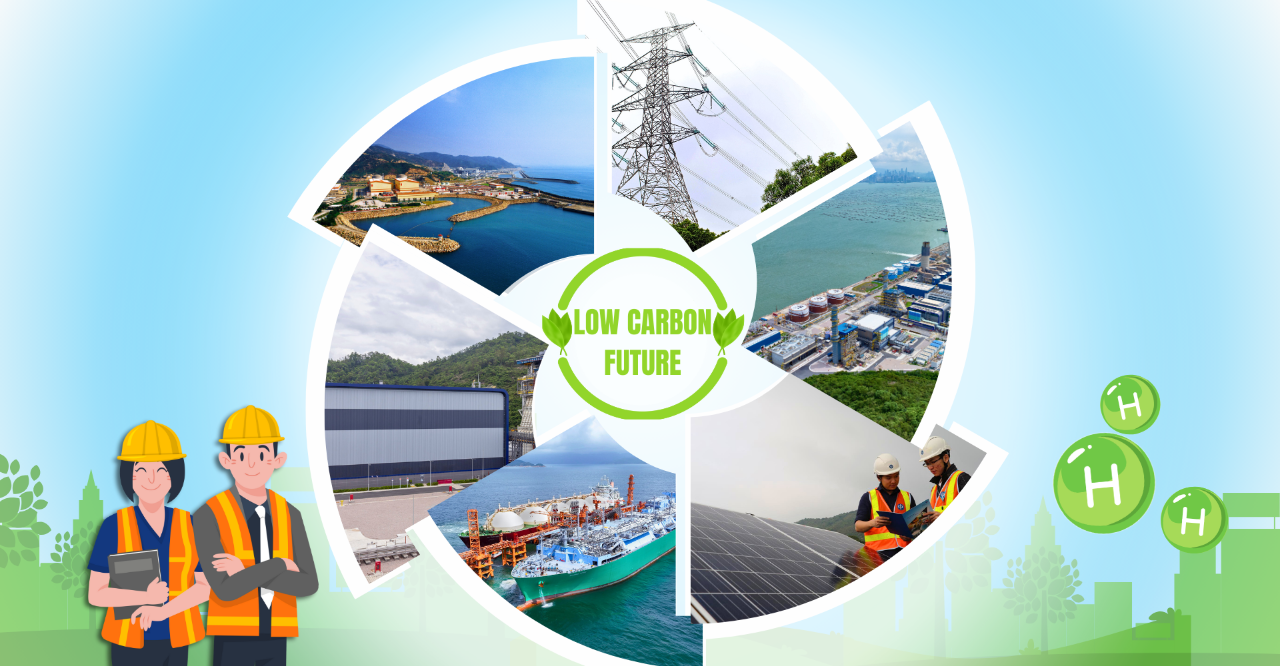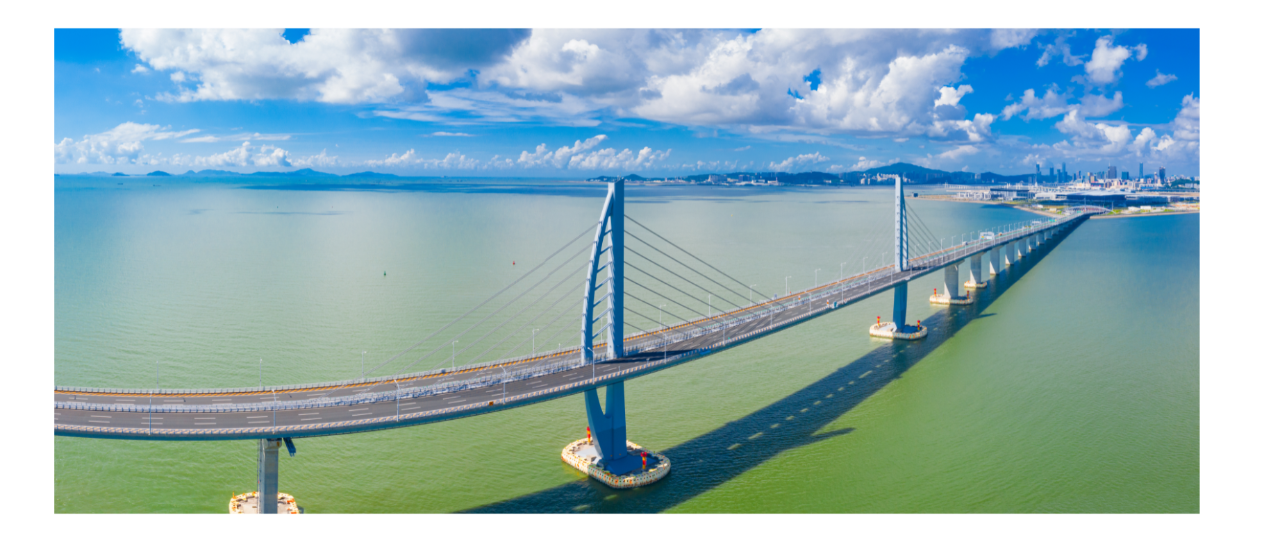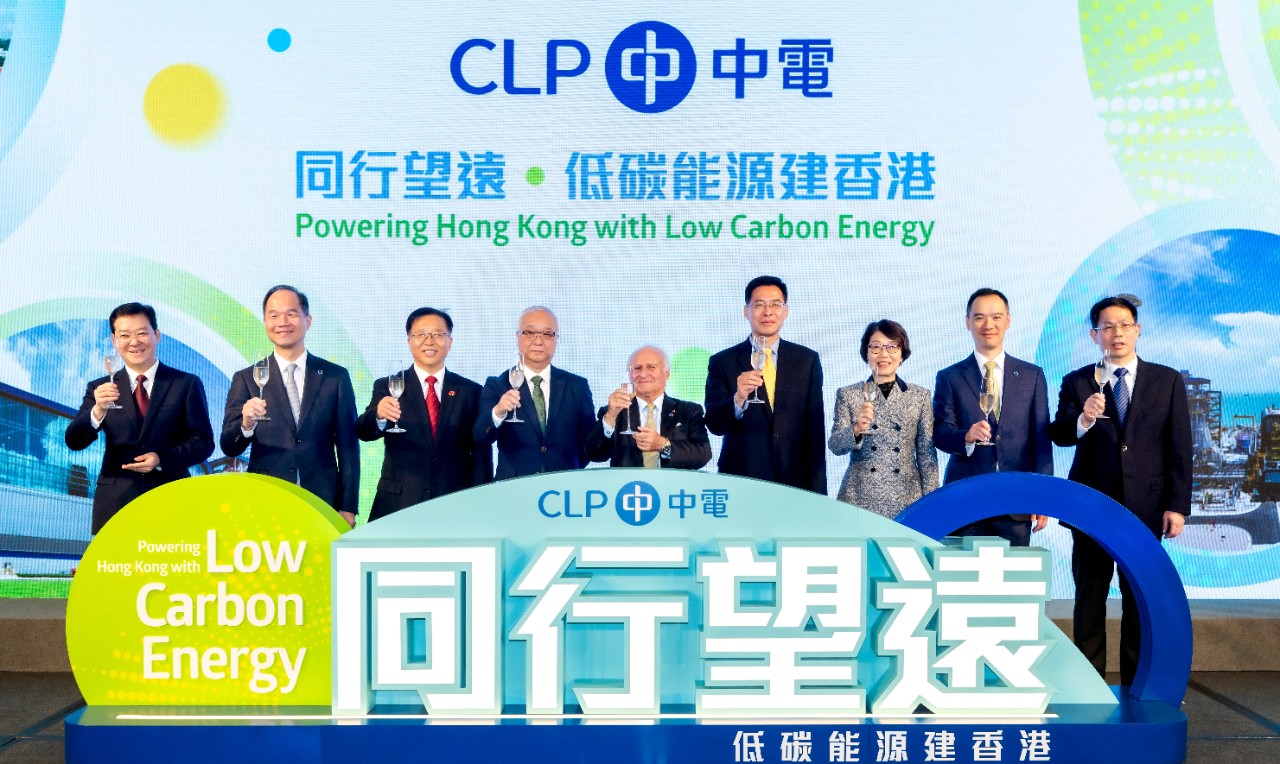A Look Back on CLP’s Road to Sustainability

My rewarding career with CLP spans more than three decades since 1988. During that time, I’ve been fortunate enough to see our incredible transformation from a straightforward electricity supplier to an integrated power company that delivers safe and reliable energy services while providing low-carbon solutions to help people across the Asia-Pacific region decarbonise. In this blog post, I reflect on the progress we have made over the years, the challenges we still face in our decarbonisation efforts, and our collective responsibility to build a brighter, more sustainable world for future generations.
30 December 2024
I recently had the opportunity to join a delegation led by Chief Executive John Lee on a visit to the Greater Bay Area, as part of the Hong Kong Government’s ongoing efforts to deepen its economic and trade cooperation with other cities of the GBA. As someone deeply committed to decarbonisation and sustainability, I found it incredibly inspiring to witness firsthand how the thriving region is driving the low-carbon transformation of the Chinese Mainland.
During the visit, CLP signed two agreements with our Chinese partners, bringing together our resources and industry-leading expertise to facilitate the low-carbon development of the transportation sector. These two partnerships add to the growing portfolio of projects we have developed to provide smart and clean energy solutions across the GBA and LNG bunkering services in Hong Kong. Whether it is building electric vehicle (EV) charging facilities or helping businesses manage their energy use more efficiently, our goal is always the same: to empower our customers to decarbonise and grow on their low-carbon journey through our closer integration with the GBA.

Strengthening regional cooperation is essential to Hong Kong’s sustainable future.
A year of clean energy milestones
These two latest agreements, which demonstrate CLP’s commitment to fostering sustainable growth and decarbonisation in the region, are part of our decadeslong cross-boundary cooperation on the Chinese Mainland.
In 2014, we formed a 70:30 partnership in Castle Peak Power Company (CAPCO) with state-owned power grid operator China Southern Power Grid Co. (CSG), which has since delivered a number of critical projects: two state-of-the-art combined-cycle gas turbine generation units at Black Point Power Station, known as D1 and D2, and Hong Kong’s first offshore LNG terminal that was launched last year.
The CAPCO partnership came after CLP Power’s initial interconnection with the Guangdong power grid in 1979, and our investment in 1994 in Daya Bay Nuclear Power Station – China’s first large-scale nuclear power project – to bring electricity to Hong Kong.
Three decades after Daya Bay went into service, we are upgrading our Clean Energy Transmission System, so that we can import more zero-carbon energy to Hong Kong. This will help us continue to phase out coal in a process that has already seen the retirement of three of the four oldest coal-fired units at Castle Peak Power Station.
Learning the language of transformation
These remarkable projects made me pause and reflect on how far CLP has gone on the road of decarbonisation. When I began my career as a graduate trainee with CLP 36 years ago, terms like decarbonisation and sustainability were barely known, let alone become a part of daily public discourse and debate. Back in the 1970s, Hong Kong’s economy was heavily reliant on oil. In 1982, just a few years before I joined CLP, Castle Peak began operations, switching our primary fuel from oil to coal as the city’s economy boomed and demand for electricity rocketed.
As my career progressed and I took up different roles in the company, I saw attitudes to the environment change and witnessed how CLP was moving with the times and transforming its systems and services as it seized new business opportunities in the clean energy sector.
Hong Kong’s economy grew robustly as environmental standards grew stricter. We took bold steps to introduce nuclear energy and natural gas for power generation in the 1990s by investing in Daya Bay and Black Point. CLP was the first external investor to purchase natural gas from the South China Sea when we started importing the fuel from Yacheng near Hainan Island in 1996. Since 2013, the gas supply to CLP is being supplemented by the Second West-East Gas Pipeline that transmits natural gas from central Asia, ensuring today’s reliable and affordable electricity supply to Hong Kong.
As we further diversify our fuel mix, the proportion of generation provided by natural gas has increased from below 30% in 2019 to nearly half of the total fuel mix in Hong Kong. In 2023, we commissioned our third source of natural gas supply through our offshore LNG receiving terminal, ensuring supply is secure, resilient and price competitive.
Nuclear power meets around a quarter of the city’s electricity demand. We are preparing to introduce more low-carbon energy to the mix, such as nuclear energy and renewable energy, through cross-boundary and regional cooperation in support of the government’s carbon neutrality goal by the middle of the century.
We are meanwhile promoting new technologies and innovative solutions, including artificial intelligence, EV charging, cooling systems, battery storage and building energy management, to help our residential and business customers decarbonise. CLP Power supports Hong Kong customers who want to install small-scale renewable energy systems in their own properties through the Feed-in Tariff scheme. We provide technical advice and help connect their systems safely to our grid. I am delighted to report that nearly 400MW of generation capacity has been approved so far under this scheme – enough to provide power for over 98,000 households for a year.
For business customers, our Renewable Energy Certificate (REC) programme offers a simple, flexible way to support the development of clean energy. Each REC represents the environmental attributes of electricity produced by renewable energy sources locally in Hong Kong, including solar power, wind power and landfill gas projects.
Beyond Hong Kong, we have a comprehensive strategy to expand our renewable energy portfolio in support of the Chinese Mainland’s dual carbon targets of achieving peak carbon emissions by 2030 and carbon neutrality by 2060. In Australia, we continue to develop flexible capacity projects, including energy storage projects, and upgrade existing power plants to support Australia’s energy transition as we retire Yallourn Power Station in Victoria in 2028. In India, Apraava Energy is energetically investing in transmission assets and smart meter projects.
Targets for a greener tomorrow
Decarbonisation is no longer a buzzword or a distant goal. It is a top-of-mind topic for policymakers, corporate executives and investors amid intensifying climate change and more stringent ESG disclosure requirements. At CLP, decarbonisation is a strategic priority alongside digitalisation and talent development, and a key element of our ambition to power a brighter future for our stakeholders.
This is why we launched our long-term climate strategy − Climate Vision 2050 – back in 2007 to guide us in fulfilling our mission and turning our vision into reality. Following a review of the strategy concluded early this year, we strengthened our greenhouse gas emissions intensity target for 2030 to bring it closer to the goal of limiting global warming to 1.5⁰C. Other decarbonisation targets and commitments were maintained, including phasing out coal-fired generation before 2040 and achieving net-zero greenhouse gas emissions across our value chain by 2050.
Seizing the opportunity for change
Earlier this month, I was privileged to join our Chairman Sir Michael Kadoorie, senior government officials and long-term partners from the Mainland at a ceremony to mark the 30th anniversary of Daya Bay and the 10th anniversary of our partnership with CSG in CAPCO. We were there not only to celebrate the role CLP has played in supporting Hong Kong's social and economic development, but also the closer ties we have built with the Chinese Mainland through the supply of low-carbon energy, thereby achieving cross-boundary strategic cooperation.
As the CEO of one of the largest investor-owned power businesses in the Asia-Pacific region and, more importantly, a father, I understand deeply the importance of energy planning for future generations. As I raised my glass and toasted to our guests, I envisaged a world where wind, solar and other sustainable energy sources like nuclear and hydrogen light up our homes and drive economic growth. Over time, I want to see a world in which clean power is no longer an expensive alternative but an affordable default, supported by green technologies and solutions such as battery systems.
The need to innovate and take action has never been more urgent. At CLP, we are determined to reduce our own emissions and to help homes and businesses do the same. Our unwavering commitment to decarbonisation and sustainability gives us a precious opportunity and responsibility to drive meaningful change and reshape our energy landscape. Together, let’s seize that opportunity and safeguard our planet so that future generations inherit a world of fresh air, blue skies and clean, abundant energy.

CLP hosts a “Powering Hong Kong with Low-Carbon Energy” reception to celebrate Hong Kong’s decarbonisation journey over the past 30 years with guests from the Hong Kong Government, key business partners and representatives from different sectors. Chairman Sir Michael Kadoorie says CLP’s strong partnerships with CGN and CSG exemplify the power and benefits of regional cooperation.
Subscribe to the CLP CEO Blog to stay informed with the latest industry insights. By subscribing, you agree to the terms in this Personal Information Collection Statement.







